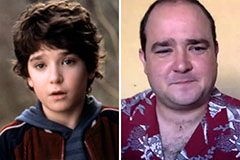
Washing devices are complex devices with various parts that collaborate to tidy and shield your clothes. The drum holds your clothing, the agitator or impeller aids get rid of dirt, the water pump rinses your clothing, and the motor powers the spin and completely dry cycles. Understanding just how these components work together can help you use your laundry home appliance better and prolong its life-span.
Washing devices come furnished with a variety of sophisticated sensors and control board that manage their procedure. These functions are developed to enhance the washing process by readjusting variables such as lots size, water temperature, and cycle size. It's vital to comprehend the function and function of these controls to get the most out of your device and to repair any type of issues that might develop. By having this understanding, users can detect and fix issues efficiently, conserving them time and money that would certainly be invested in professional repair work.
Determining Common Issues with Your Appliance
Recognizing the hidden reason for a breakdown in your cleaning device is the first action in discovering an effective fix. A valuable starting factor is the instruction manual that accompanies your appliance, as it normally contains a directory of common problems, possible triggers, and suggested solutions. It is very important not to overlook basic options: see to it the appliance is linked to power which the electric circuit hasn't been disrupted, which is a sensible initial action before proceeding to more intricate troubleshooting steps.
It's also beneficial to familiarize yourself with the core elements and features of your device. Basic knowledge concerning the water shutoff, drainpipe pump, agitator, belt, and electric motor can immensely aid in detecting the trouble. Moreover, observing any recognizable adjustments in the machine's behavior such as unusual noises, resonances, or efficiency irregularities will certainly provide critical ideas as to what might have gone wrong. For this reason, an eager feeling of monitoring combined with a fundamental understanding of the appliance might give the initial diagnosis needed prior to resorting to professional assistance.
Attending To Water Loading Issues
Water filling issues in laundry appliances most commonly stem from a breakdown within either the water inlet valve or the pressure button. The valve manages the quantity of supply of water to the machine, while the stress switch informs the device when it has actually reached the appropriate degree. If the valve is damaged or the pressure button is defective, it can bring about inaccurate water levels; either filling way too much or inadequate.
One method of troubleshooting includes by hand filling the device with water. If the equipment runs usually when manually filled, the issue most likely lies within the water inlet shutoff. Additionally, if an extreme amount of water enters the maker regardless of reaching the established level, the pressure switch is likely the perpetrator. It is necessary for home owners to adhere to the particular guidelines and safety precautions offered by the maker when checking these parts, or consider getting the aid of a professional.
Dealing With Drain Issues
When a laundry machine experiences drainage troubles, one common indicator is water sticking around inside the device even after a wash cycle ends. This concern can be brought on by different variables such as an obstructed or kinked drainpipe hose, or a faulty drain pump. Recognizing these regular reasons is critical for determining and solving the underlying problem properly. If water continues to build up in spite of numerous rinse efforts, it is important to act without delay to stop water damage or the growth of mold.
Taking on a methodical strategy to address water drainage interruptions can yield acceptable outcomes. Firstly, a visual assessment of the drain hose can disclose feasible obstructions or physical damages. If clearing the clog or aligning a curved tube does not supply a resolution, it may be time to take into consideration a defective drain pump, which may call for professional servicing or replacement. Furthermore, mindfully checking any type of error code that shows up on the appliance's console during the cycle can provide useful insights relating to the nature of the disturbance. An appliance guidebook can aid in deciphering these mistake messages, even more aiding in pinpointing the precise concern.
Repairing Non-Spinning Problems
Among the usual issues you might face with your washing device is a non-spinning drum. This is generally a symptom of a mechanical failure, commonly with the electric motor, belts, or lid switch. The electric motor is what powers your washer's spin cycle, and if it's burnt out or malfunctioning, your washing machine won't rotate. Similarly, malfunctioning belts and cover buttons can hinder the drum's capability to turn.
Determining the exact source of the non-spinning concern can in some cases be challenging yet is a vital step towards an effective fixing. To identify the issue, initially inspect the lid button for indications of wear or damage. A fast technique of verification can be paying attention for a clicking sound as you open and close the cover. In the absence of this audio, the cover switch may require replacement. Broken belts or worn out motors may call for professional inspection. Constantly keep in mind, safety and security first; prior to checking any electric or mechanical part, always ensure that the washing machine is unplugged.
Repairing Insufficient Cycle Troubles
Frequently, the have problem with laundry appliances isn't limited to just water filling out or draining pipes out, but it transcends to a lot more detailed concerns like insufficient cycles. This occurs when the laundry maker quits arbitrarily at any kind of factor during its wash, rinse or spin cycles. This aggravating misstep can be an outcome of a selection of factors from a defective timer or control board to cover switches over not operating effectively. Additionally, if the home appliance's motor is overheating or the water level switch is malfunctioning, these can additionally add to the disturbance of the machine's regular cycle.
Resolving this issue needs a mindful diagnostic process to ascertain the origin of the concern. Start by conducting an easy exam of the lid switch, as damage in time can create it to stop working correctly. Moving along, examine the water level button; if it is defective, it might send out inaccurate signals to the machine about when to begin and stop. You may additionally wish to inspect the appliance's control panel and timer. If they are damaged, the maker could either quit mid-cycle or otherwise start at all. Please remember that this sort of fixing ought to be executed with care as electrical power is involved, and if you are unclear regarding any action of the process, it is suggested you consult an experienced expert.
Addressing Extreme Sound and Vibration Problems
Extreme sound and resonance from your laundry home appliance can show several prospective concerns, varying from an unbalanced load to a malfunctioning element within the maker. Often triggered by unequal circulation of clothes, vibrations can be quickly remedied by pausing the cycle and redistributing the tons within the drum. However, if the noise and resonance linger, it might be because of worn out or loose drive belts, drum bearings, or motor.
To correctly detect the issue, it may be essential to visually inspect the components Laundry Aplliance Repair in question for any indicators of wear or damages and replace any kind of defective components in a prompt way. If your appliance remains to make loud noises despite your efforts to redistribute the lots, it's extremely recommended that you get in touch with an expert. An experienced professional will have the capacity to determine and repair the source of the issue, ensuring your equipment operates quietly and successfully. It's essential to resolve these problems immediately, as prolonged resonances or noises might cause additional damage to your home appliance or bordering area.
Fixing Temperature Law Problems
On several instances, wrong temperature guideline in cleaning devices can create significant trouble. This issue mostly occurs when the thermostat or the heating element of your gadget faces technical mistakes. The thermostat is responsible for controlling the water temperature level while the heating element makes sure the water is appropriately heated for every clean cycle. However, a solitary problem in operating, whether due to deterioration, malfunctioning circuitry, or an unresponsive control board, can moisten the efficient procedure of your device.
To resolve this, it's critical to begin with standard troubleshooting. Beginning with examining the cleaning device's temperature setting. It should represent the treatment tags on your washing-- too expensive or as well low a temperature can damage textiles and influence the total cleaning effectiveness. If the settings are in order however the temperature seems incorrect, professional aid might be required. Trained technicians can take on the needed evaluations of the burner and thermostat, execute requisite repair work, or suggest substitute components as required. It's very advised not to attempt any interior fixings without expert supervision as it may lead to unsafe situations and likewise void any existing warranties.

 Amanda Bynes Then & Now!
Amanda Bynes Then & Now! Bradley Pierce Then & Now!
Bradley Pierce Then & Now! Daniel Stern Then & Now!
Daniel Stern Then & Now! Kane Then & Now!
Kane Then & Now! Bill Cosby Then & Now!
Bill Cosby Then & Now!